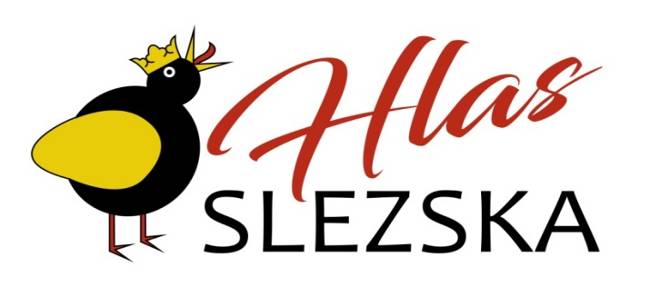AAC COMPETENCY UPDATEV2100119LED KASA KNOWLEDGEBASED COMPETENCIES AUGMENTATIVE & ALTERNATIVE
10A NCAC 13J 1110 SUPERVISION AND COMPETENCY OF INHOME2 VIRGINIA BOARD OF MEDICINE CONTINUED COMPETENCY ACTIVITY AND
213 CONTINUING PROFESSIONAL COMPETENCY REQUIREMENTS FOR LICENSURE RENEWAL THE
307 CONTINUING PROFESSIONAL COMPETENCY REQUIREMENTS FOR CERTIFICATION RENEWAL FOR
3OF 16 COMPETENCY BASED FIELDWORK EVALUATION COMPETENCY BASED FIELDWORK
4 STUDY GUIDE FOR COMPUTER APPLICATIONS COMPETENCY TEST SHELBY
Tracking of KASA Development
AAC Competency Update_v2_10.01.19_LED
KASA Knowledge-Based Competencies: Augmentative & Alternative Communication Modalities
|
Knowledge or Skill Area |
Proposed Competencies/Questions
|
Course(s) Where Competency is Acquired |
|
|
No. |
Description |
||
|
IV.B. |
Knowledge of basic human communication and swallowing processes, including the appropriate biological, neurological, acoustic, psychological, developmental, linguistic and cultural bases. |
Competency: Will demonstrate the knowledge and skills required to effectively select vocabulary/words for a preliterate and pre-symbolic/prelinguistic child who is at an early communication level and requires graphically-represented vocabulary to build early concept knowledge and develop language. (Q4) Competency: Will demonstrate knowledge of developmental changes in language and communication (seven levels of communication; pre-symbolic to symbolic communication; early language concepts) (Q5,6). Competency: Will demonstrate the knowledge of principles and evidence-based methods of intervention for people with developmental disabilities and complex communication needs (CCN) across the age-span who are preliterate, pre-symbolic/prelinguistic, early symbolic, and symbolic communicators. (Q5) Competency: Will demonstrate the differences between unaided communication and aided communication as it pertains to the instruction of people with CCN across the lifespan and on a variety of communication modalities relevant and sensitive to cultural-linguistic differences to maximize communication effectiveness and efficiency. (Q6).
|
242, 307, 352, 404, 474, 564, 576, 577
|
|
IV.C. |
Knowledge of communication and swallowing disorders and differences, including the appropriate etiologies, characteristics, anatomical/physiological, acoustic, psychological, developmental, linguistic and cultural correlates.
|
Competency: Will demonstrate knowledge in the operational, language representation & communicative differences between no technology, low-mid technology, and high technology aided AAC systems as related to individual’s cross-linguistic, cultural, cognitive, and communicative needs & characteristics given their developmental, acquired or progressive neuromuscular etiologies. (Q2) Competency: Will demonstrate knowledge of the purpose and process of an AAC assessment relevant to school-age children with CCN. (Q3) Competency: Will demonstrate the differences between unaided communication and aided communication, recognizing the relevant and sensitive nature of cultural-linguistic differences as it pertains to the selection of vocabulary and the linguistic instruction of people with CCN across the lifespan. (Q6).
(continue on next page) Competency: Will demonstrate knowledge of developing proactive spoken and written communication intervention plans with an AAC user who presents with a progressive or degenerative disease, and their significant communication partners and/or caregivers. (Q7) Competency: Will demonstrate knowledge of how to accommodate speech and language disabilities throughout recovery from an acquired brain injury (ABI) using both unaided and aided AAC systems. (Q8) Competency: Will demonstrate knowledge of the link between literacy and communication and describe the relationship between written language (reading and writing) and communication using graphic symbol-based aided AAC systems. (Q9)
|
576
|
|
IV.D. |
Current knowledge of the principles and methods of prevention, assessment, and intervention for people with communication and swallowing disorders including consideration of anatomical/physiological, psychological, developmental, and linguistic and cultural correlates.
|
Competency: Will demonstrate knowledge of the theoretical, ethical, and evidence-based approaches that undergird AAC assessment and intervention or instruction. (Q1) Competency: Will demonstrate knowledge of the purpose and process of an AAC assessment relevant to school-age children with CCN. (Q3) Competency: Will demonstrate the knowledge and skills required to effectively select vocabulary/words for a preliterate and pre-symbolic/prelinguistic child who is at an early communication level and who requires graphically-represented vocabulary to build early concept knowledge and develop language. (Q4) Competency: Will demonstrate knowledge of evidence-based intervention methods for people with developmental disabilities and complex communication needs (CCN) across the age-span who are preliterate, pre-symbolic/prelinguistic, early symbolic, and symbolic communicators. (Q5) Competency: Will demonstrate the differences between unaided communication and aided communication, recognizing the relevant and sensitive nature of cultural-linguistic differences as it pertains to the selection of vocabulary and the instruction of people with CCN across the lifespan. (Q6) Competency: Will demonstrate knowledge of developing proactive spoken and written communication intervention plans with an AAC user who presents with a progressive or degenerative disease, and how to include their significant communication partners and/or caregivers. (Q7) Competency: Will demonstrate knowledge of how to accommodate speech and language disabilities throughout recovery from an acquired brain injury (ABI) using both unaided and aided AAC systems. (Q8) Competency: Will demonstrate knowledge of the link between literacy and communication and describe the relationship between written language (reading and writing) and communication using graphic symbol-based aided AAC systems. (Q9)
(continue on the next page) |
576
|
|
IV.F. |
Knowledge of processes used in research and of the integration of research principles into evidence-based clinical practice. |
Competency: Will demonstrate ability to interpret clinical evidence-based research outcomes in the selection of appropriate assessment and intervention approaches for individuals with complex communication needs who require aided AAC systems. (Q3, 4,5,7,8,9) |
576 |
A CANDIDATES GUIDE TO COMPETENCY BASED SELECTION CROWN OFFICE
AAC COMPETENCY UPDATEFINAL 101419LED KASA KNOWLEDGEBASED COMPETENCIES AUGMENTATIVE &
AAC COMPETENCY UPDATEV2100119LED KASA KNOWLEDGEBASED COMPETENCIES AUGMENTATIVE & ALTERNATIVE
Tags: alternative communication, competency, competencies, alternative, updatev2100119led, knowledgebased, augmentative
- NURSING A PAZIENTI CON PROBLEMI RESPIRATORI 1 OSSIGENOTERAPIA LA
- COMUNICADO DE PRENSA OSLO VUELVE A CONTRATAR LA TECNOLOGÍA
- PARALLEL RUPTURES JEWS OF BESSARABIA AND TRANSNISTRIA BETWEEN ROMANIAN
- ROMSEY PRIMARY SCHOOL ‘POLICY & PROCEDURES DEVELOPMENT’ POLICY RATIONALE
- HANS H HIEBEL AUKTORIALES UND PERSONALES DRAMA WISSENSCHAFTSGESCHICHTLICHE STUDIE
- AFFECTGATING DAN KING CHRIS JANISZEWSKI UNIVERSITY OF FLORIDA
- ADENOVIRAL REFERENCE MATERIAL WORKING GROUP BID SUBMISSION FORM PARTICIPATION
- VRSTA ODVISNIKA + PRIMER VPRAŠALNICA VEZNIŠKE BESEDE 1 OSEBKOV
- FIRMA MUSTER ARBEITSPLATZ MUSTER TÄTIGKEIT MUSTER BETRIEBSANWEISUNG PERSONENNOTSIGNALANLAGEN DATUM
- 24 BAB I PENDAHULUAN A LATAR BELAKANG MASALAH PENDIDIKAN
- REPUBLIKA HRVATSKA ŽUPANIJA VUKOVARSKOSRIJEMSKA BOROVO DJEČJI VRTIĆ ZLATOKOSA BOROVO
- STANDART FORM 2 “TEBLİGAT İÇİN ADRES BEYANI” İTÜKKTC EĞİTİM
- WARSZAWA 20200825 REGULAMIN FOTOWARSZTATÓW „ILFORD PHOTO WALK 2020 WROCŁAW”
- NA TEMELJU ČLANKA 32 STATUTA GRADA ŠIBENIKA(„SLUŽBENI GLASNIK GRADA
- KOMUNIKAT POWIATOWEGO LEKARZA WETERYNARII W ZAWIERCIU W
- DK3R 04 (HSC368) PRESENT INDIVIDUALS’ NEEDS AND PREFERENCES ELEMENTS
- F UNDRAISING GUIDELINES AMTGARD KINGDOM OF THE EMERALD HILLS
- MAS KRÁLOVSTVÍ – JESTŘEBÍ HORY O P S POD
- T YEAR LEVEL YEAR 7 8 9
- ZAŁĄCZNIK NR 4 DO WSZEP 10ZO2017 ZAŁĄCZNIK NR 4
- CURRICULUM VITAE – BOŽENA LIPEJ IME IN PRIIMEK BOŽENA
- EJERCICIO PREPARATORIO – CONTESTA LAS PREGUNTAS 1 ¿DÓNDE NACISTE
- OCEAN FLOOR WEBQUEST HTTPWWWOCEANUDELEDUEXTREME2002 1 DIVE IN MISSION TO
- LA CITTÀ DI STRASBURGO E IL CONSIGLIO D’EUROPA CON
- PARENTS…IMPORTANT SAFETY REMINDERS THE SAFETY OF OUR CHILDREN
- FORMAT III PENGUMUMAN PANITIA SELEKSI PENGISIAN JABATAN PIMPINAN TINGGI
- OBRAZAC TRG – 16V CRNA GORA ZAVOD ZA STATISTIKU
- PALABRAS DEL EMBAJADOR JEANCLAUDE NOLLA OBSERVADOR PERMANENTE DE FRANCIA
- + MÀSTER EN METODOLOGIA DE LA RECERCA APLICADA A
- WHETHER WHITHER WITHER NEW TECHNOLOGIES FOR SAFER PROCESS DESIGN?
 HOSPITAL ARNAU DE VILANOVA DE VALENCIA HOSPITAL DE LLÍRIA
HOSPITAL ARNAU DE VILANOVA DE VALENCIA HOSPITAL DE LLÍRIA PŘIHLÁŠKA PRO KLASICKÝ ZPĚV (O I II III IV
PŘIHLÁŠKA PRO KLASICKÝ ZPĚV (O I II III IVO MAIOR DESAFIO CADA UM DE NÓS TEM DESAFIOS
 STATISTIČNI SOSVET ZA STATISTIKO ZUNANJE TRGOVINE ŠTEVILKA 01316200811 DATUM
STATISTIČNI SOSVET ZA STATISTIKO ZUNANJE TRGOVINE ŠTEVILKA 01316200811 DATUM CERERE DE ELIBERARE A UNEI VIZE SCHENGEN FORMULAR GRATUIT
CERERE DE ELIBERARE A UNEI VIZE SCHENGEN FORMULAR GRATUIT PENGARUH PERASAN BUNCIS (PHASEOLUS VULGARIS) (SAPTO YULIANI) 49
PENGARUH PERASAN BUNCIS (PHASEOLUS VULGARIS) (SAPTO YULIANI) 49COLUMN NAME COLUMN DEFINITION (NOTE ALL COLUMN NAMES ENDING
 RESOLUCIÓN NO DE HOJA NO 44
RESOLUCIÓN NO DE HOJA NO 44  5 TỈNH UỶ TUYÊN QUANG ĐẢNG CỘNG SẢN VIỆT
5 TỈNH UỶ TUYÊN QUANG ĐẢNG CỘNG SẢN VIỆTSAN MIGUEL XX DE XXXXXX DE XXXX DOCTOR CARLOS
 DE NOTIFICACIÓN DE AUDIENCIA A LAS PARTES CENTRO JUDICIAL
DE NOTIFICACIÓN DE AUDIENCIA A LAS PARTES CENTRO JUDICIAL 1 AUTOCVIČISKO OSOBNÉ MOTOROVÉ VOZIDLO 8M 5M 25M 28M
1 AUTOCVIČISKO OSOBNÉ MOTOROVÉ VOZIDLO 8M 5M 25M 28MLECCIÓN 14ª EL PODER JUDICIAL Y LAS FUNCIONES CONSTITUCIONALES
VÁŽENÉ KOLEGYNĚ KOLEGOVÉ VÁŽENÍ HOSTÉ DÁMY A PÁNOVÉ DOVOLTE
 DAUGAVPILS 9 VIDUSSKOLAS DIREKTORAM ARTURAM FEDOTOVAM VECĀKA (AIZBILDŅA)
DAUGAVPILS 9 VIDUSSKOLAS DIREKTORAM ARTURAM FEDOTOVAM VECĀKA (AIZBILDŅA) JOE MCARTHUR CHAIR WECC STANDARDS COMMITTEE JULY 24 2014
JOE MCARTHUR CHAIR WECC STANDARDS COMMITTEE JULY 24 2014 A1 I A2 LIGA PRVENSTVA BIH POSEBAN IZVJEŠTAJ
A1 I A2 LIGA PRVENSTVA BIH POSEBAN IZVJEŠTAJ  Power Factor and Kfactor in the Analysis of Dcdc
Power Factor and Kfactor in the Analysis of Dcdc CONGRESO INTERNACIONAL DATOS EDUCACIÓN Y SOCIEDAD 3 ESCRIBA AQUÍ
CONGRESO INTERNACIONAL DATOS EDUCACIÓN Y SOCIEDAD 3 ESCRIBA AQUÍIII NÁVRH ZÁKON ZE DNE … 2016 KTERÝM SE